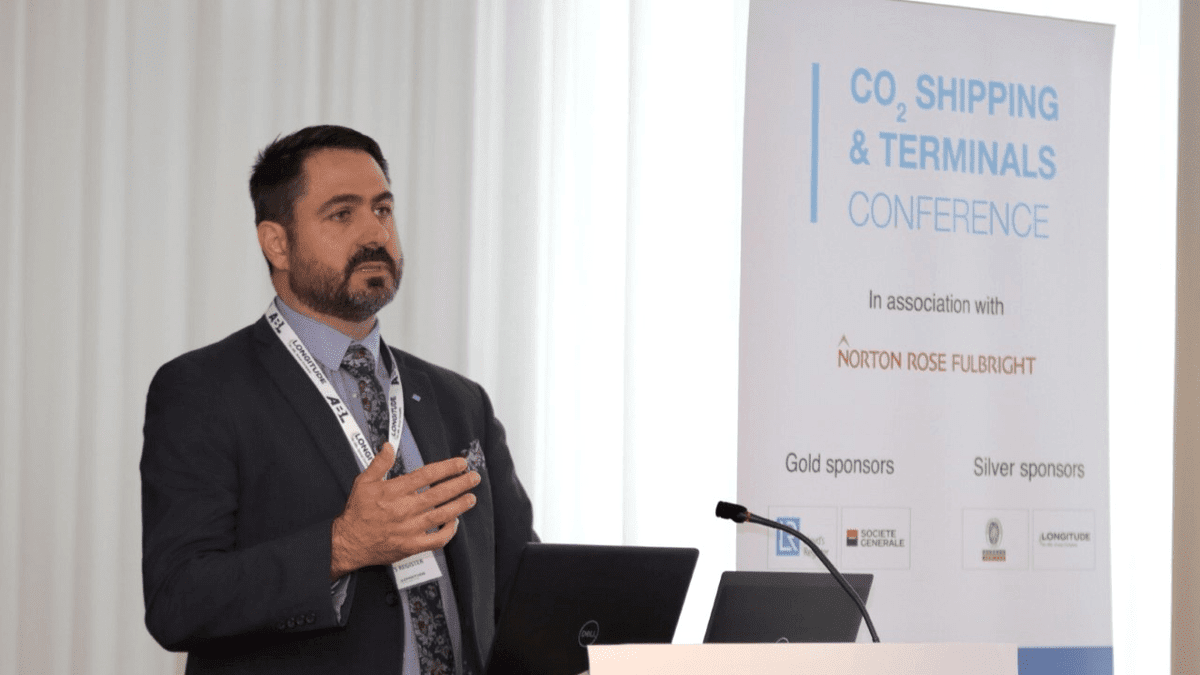For a developing industry with a mandate to mature quickly, the major risk lies in overly ambitious growth, said Lloyd’s Register global offshore business director Sean Van Der Post
Mr Van Der Post gave an overview of the risk profile and key risk elements related to CO2 transport for delegates at Riviera Maritime Media’s CO2 Shipping & Terminals Conference.
The level of attractiveness of carbon capture and storage (CCS) poses an inherent risk for the newly developing transport market and the technologies that are being designed to serve that market, according to Mr Van Der Post.
“With CCS being critical to meeting emissions reductions… everybody sees the potential competitive advantages… the numbers of technologies coming into the market is, by orders of magnitude, greater than what we could (use),” he said.
A glut of technologies creating a fragmented market introduces things like incompatibility and lack of standardisation, he said.
Another risk comes from the fact that all CO2 that will be captured is not the same.
“The CO2 is being captured from a vast variety of different sources. That means the impurities in those sources are going to be very different,” Mr Van Der Post said. “Seeing what the effects of these impurities are over a longer term is something that still needs to be learned.”
Another risk inherent to an emerging market is lack of experience, and there are as yet no dedicated vessels sailing today to start building data and experiential learning within the new sector from which to build risk management plans.
“Our understanding is improving every day, and what ultimately will be causing operational failures in terms of system design is something that we still need to more data to understand,” Mr Van Der Post said.
What experience there is, mainly comes from pipeline projects – the US has 50 pipeline projects related to carbon capture and storage – so, Mr Van Der Post said there is a lot of experience in handling CO2, but not specifically related to shipping and transporting the gas.
As the industry looks at scaling designs for bigger CCS projects and bigger vessels to transport more volume, Mr Van Der Post said it becomes difficult to scale designs without the experience behind it to underpin what challenges these designs might need to overcome.
However, he said some significant challenges include: loading and offloading procedures and the potential for solids being formed, including procedures for how to limit solidification and how to mitigate the operational downtime that would result from damage and clearing blockages linked to solidification.
We simply don’t know the frequency of these types of risks and what we need to put in place to be able to limit them. And that risk can be amplified when new types of CO2 storage processes are attempted.
“With CCS, what we’re also going to be seeing is the potential to be doing injection into wells. And that technology is something that is a lot less proven. And that presents a scenario with an element of risk,” he said, noting that as he is coming from an offshore industry perspective, professionally, he believes the offshore sector offers experience that would help mitigate these elements of risk.
In terms of the consequences in what we understand around elements of risk for CO2 capture and utilisation, generally, Mr Van Der Post did not mince words on the worst human risk that could face ships’ crews if a major leak occured on board a CO2 transporting vessel.
“It is certainly an asphyxiant and could certainly lead to the death of people on board a vessel,” he said.
The potential for high concentrations of CO2 in a confined space or large release due to catastrophic failure is greater with the advent of the substance’s transport than the types of handling that have come before.
Releases into the environment are undesirable, too, even where safety impact to humans is managed, Mr Van Der Post said.
“It is very difficult to determine at this stage what the commercial impact would be of such a large release, but the societal response could cause the industry to grind to a halt. And from an operational standpoint, if there is a CO2 release, the engine performance on board a vessel… it is not going to run very well, if at all,” he said.
However, as Mr Van Der Post pointed out, potentially the biggest risk for carbon capture storage, transport and utilisiation comes from the scale and the ambition of the industry.
“Have we got the technology to go out there and do the job? Absolutely. Can we manage the risks? Absolutely. But we’re not doing it over 50 or 60 years, like we did with LNG.
The desire is to do it in less than 10. We don’t have the vessels on the water yet, and we need to be wary of not letting our ambitions run away with us before we have empirical evidence to provide risk management plans.”






